For the average vehicle owner, there's one element that often goes unnoticed yet plays a pivotal role in our safety: vehicle lighting. Vehicle lighting is not only used to show us the way through the dark, but they are also used as an important form of communication to other drivers. Many of us have experienced a vehicle from another lane turning into our own without the warning of a signal light, or have had the high beams flashed in our direction to warn us of a danger ahead. Those are dangerous situations that could be easily avoided. We often look at upgrading to the latest headlamp, hand torch or mounted gun light, but we rarely discuss the benefits of LED lighting being added to your average, everyday vehicle. Improving your visibility, and means of communicating with other vehicles on the road is simple and easy to do.
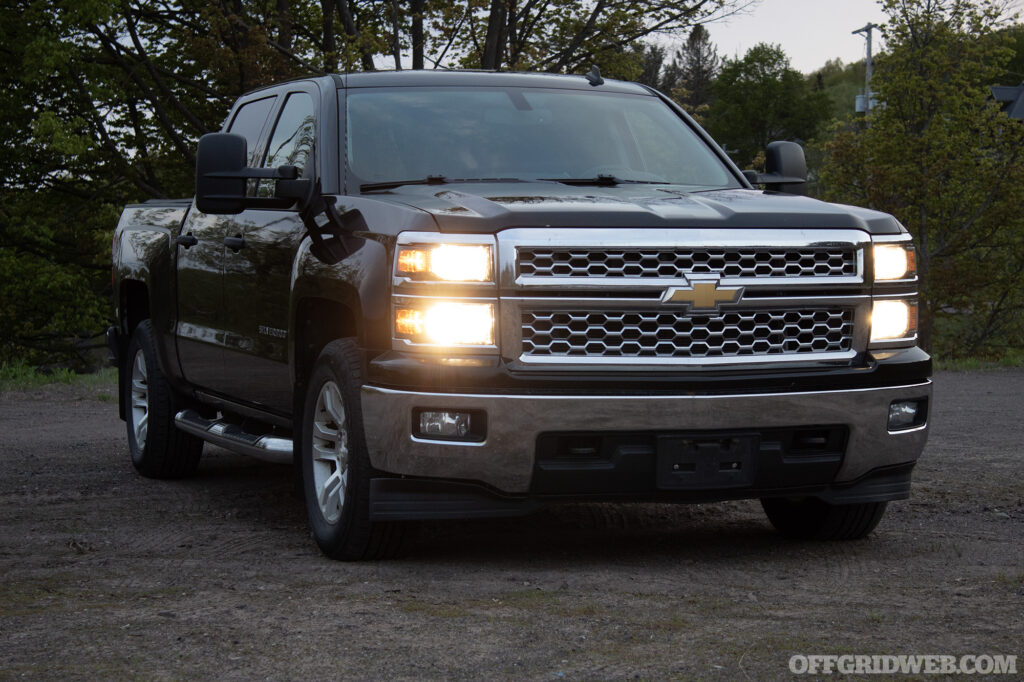
Above: Halogen headlights have been used for decades, but their warm light is sub-optimal compared to modern LEDs.
Tracing the Path of Automotive Illumination
Before the age of electricity, vehicles, primarily horse-drawn carriages, relied on lanterns fueled by oil or kerosene. These lanterns, though rudimentary, served the dual purpose of illuminating the path and signaling the vehicle's presence to others. However, their limited brightness and the need for constant refueling made them less than ideal for the burgeoning world of motor vehicles. The late 19th and early 20th centuries marked a significant shift in vehicle lighting. With the advent of the electric bulb, cars began to feature electric headlights. The 1912 Cadillac was one of the first cars to incorporate an electrical system, which included electric lights. This not only improved visibility but also eliminated the need for drivers to step outside to light or adjust their lamps.
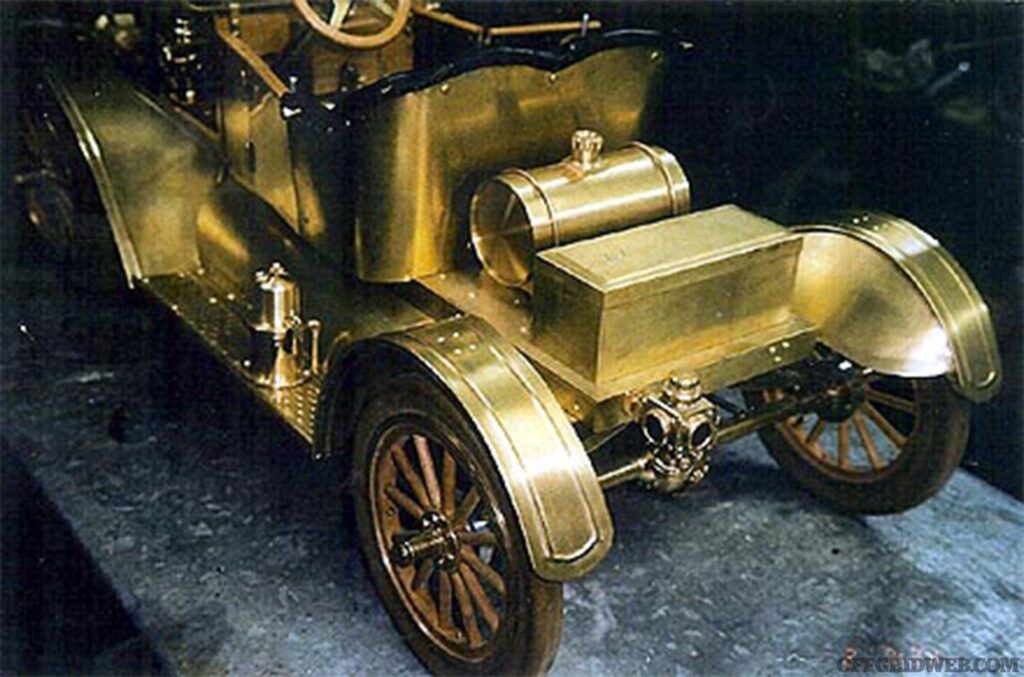
Above: Notice the kerosine tail light on this Model T? This method was used to signal and illuminate on everything from horse-drawn carriages to steam locomotives.
Introduced in the 1960s, halogen bulbs became the standard for vehicle lighting for several decades. They offered a brighter, whiter light compared to their predecessors and had a longer lifespan. The tungsten filaments in these bulbs, encased in halogen gas, ensured that the filament didn't degrade quickly, leading to a more extended period of illumination. The 1990s saw the rise of HID (high-intensity discharge) or Xenon lights. These lights, known for their distinctive blue-white glow, provided even better illumination than halogen bulbs. Instead of a filament, they used an arc of electricity between two electrodes, housed in a chamber filled with xenon gas. This technology resulted in brighter light output and increased efficiency.
The 21st century ushered in the era of Light Emitting Diodes (LEDs). LEDs transformed the automotive lighting landscape with their superior brightness, efficiency, and longevity. Their compact size also allowed for more innovative and stylish headlight designs. Moreover, with the ability to turn on and off instantly, LEDs found applications in brake lights, enhancing safety by reducing the reaction time for drivers following behind. With advancements in technology, vehicle lighting has become more than just about illumination. Modern cars come equipped with adaptive lighting systems that adjust the beam direction based on steering input, ensuring optimal illumination on curves. Additionally, smart lighting systems can automatically adjust the light intensity based on external conditions, ensuring maximum visibility without blinding oncoming drivers.
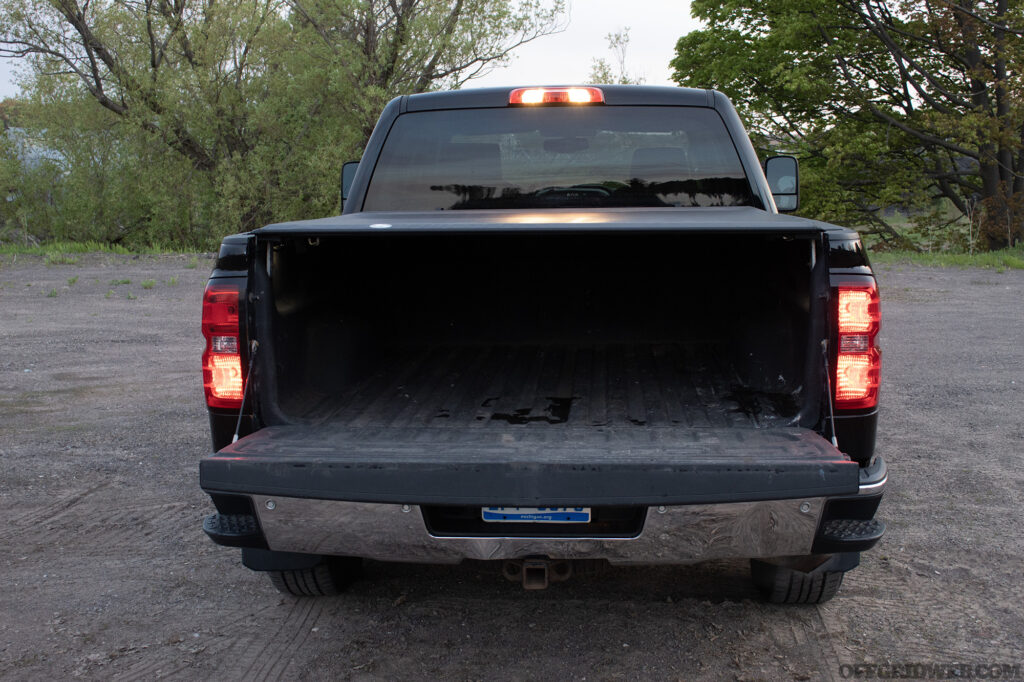
Above: A major drawback of vehicle lights that use filaments is that they burn out much quicker than modern LED's.
Advantages of Modern Lighting Systems
Superior Visibility: Modern lighting systems, especially LEDs, emit a brighter and more intense light compared to traditional halogen bulbs. This increased brightness ensures that drivers can see farther and more clearly, especially during nighttime or adverse weather conditions. LEDs often produce a cooler, whiter light that closely resembles daylight. This natural color improves contrast, helping drivers recognize obstacles, pedestrians, and road signs more quickly and accurately.
Energy Efficiency: LEDs are known for their low power consumption. They can produce the same amount of light as halogen bulbs while using a fraction of the energy. This efficiency translates to less strain on a vehicle's electrical system and potential fuel savings. With increased energy efficiency comes a reduction in CO2 emissions. As vehicles consume less power for lighting, they indirectly contribute to a decrease in environmental pollution.
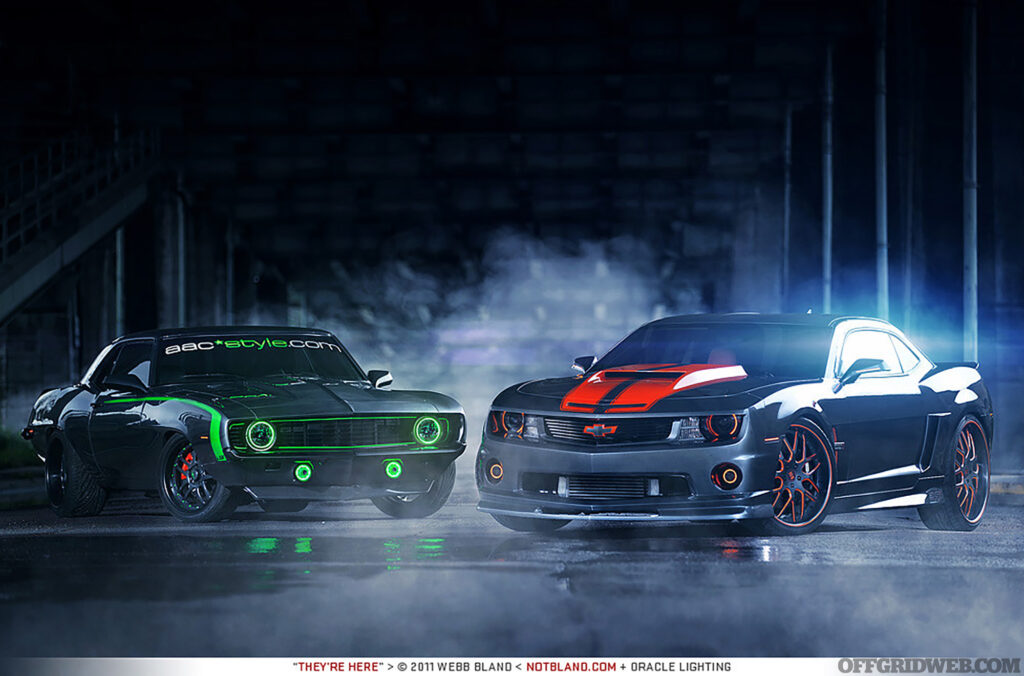
Above: LEDs can dramatically ramp up the cool factor by outlining grills, undercarriages and hood ornaments. But it also makes the vehicle easier to spot in the dark, increasing safety.
Durability and Longevity: Modern lighting technologies have a significantly longer lifespan than traditional bulbs. While a halogen bulb might last around 1,000 hours, an LED can last up to 50,000 hours, reducing the need for frequent replacements. Modern lights are devoid of fragile filaments, and are more resistant to vibrations and shocks, making them less prone to damage during bumpy rides or minor accidents.
Design Flexibility: The small size of LEDs has given automotive designers more freedom to experiment with headlight designs, leading to more aerodynamic and aesthetically pleasing vehicles. Modern lighting systems can incorporate adaptive features, such as cornering lights that turn with the steering wheel, ensuring optimal illumination in all driving scenarios.
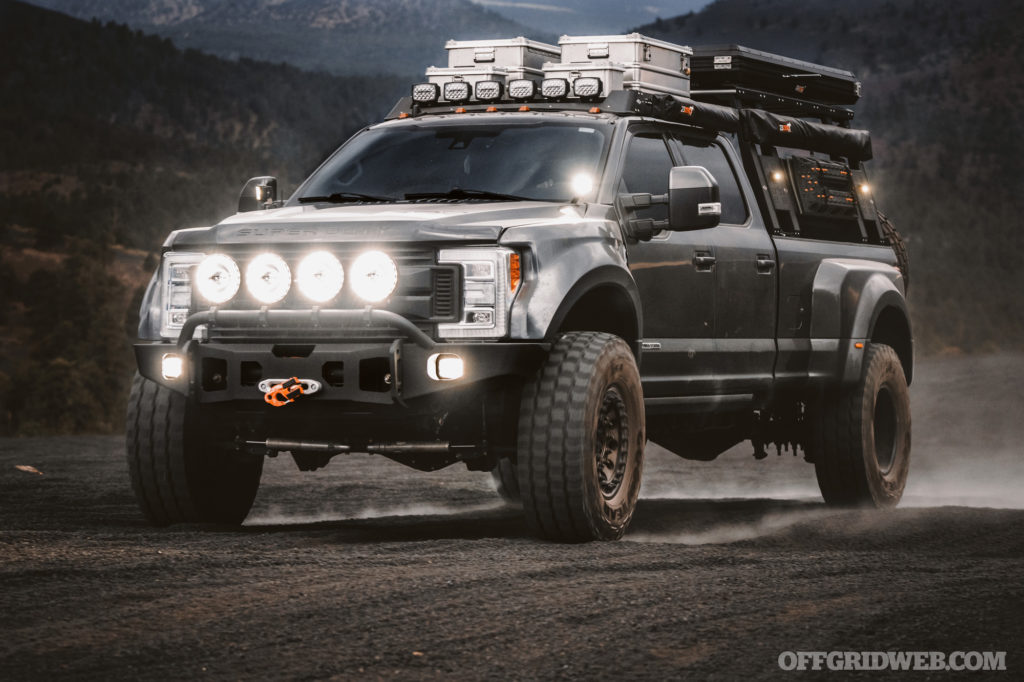
Above: Adding lights can help campers and overlanders spot safety concerns on in rough terrain after the sun goes down.
Safety Enhancements: LEDs light up instantaneously, which is especially beneficial for brake lights. The immediate illumination can give the driver behind a few extra milliseconds to react, potentially preventing accidents. Advanced lighting systems are designed to reduce glare for oncoming drivers, ensuring that brighter lights don't compromise the safety of others on the road.
Cost Savings: Given their extended lifespan, modern lights, though more expensive initially, can lead to cost savings over time as they don't need frequent replacements. With their enhanced durability, modern lighting systems often require less maintenance, saving vehicle owners both time and money.
Potential Pitfalls of Upgrading Lights
Initial Investment: Many LED options can be more expensive than traditional halogen bulbs. This initial investment can deter some vehicle owners, especially if they're unaware of the long-term benefits. Upgrading to a more advanced lighting system might require professional installation, adding to the overall cost.
Compatibility and Integration Issues: Not all modern lights are plug-and-play solutions for older vehicle models. Some vehicles might require modifications or additional components to accommodate the new lights. Advanced lighting systems might have different power requirements, potentially necessitating upgrades to the vehicle's electrical system or wiring. For example, older vehicles come with removable relays that help control certain features like blinker speed. Newer vehicles on the other hand, have replaced relays digitally. Which means fixing issues like hyper-blinking after installing LEDs might be impossible without a dealership to reprogram digital components.
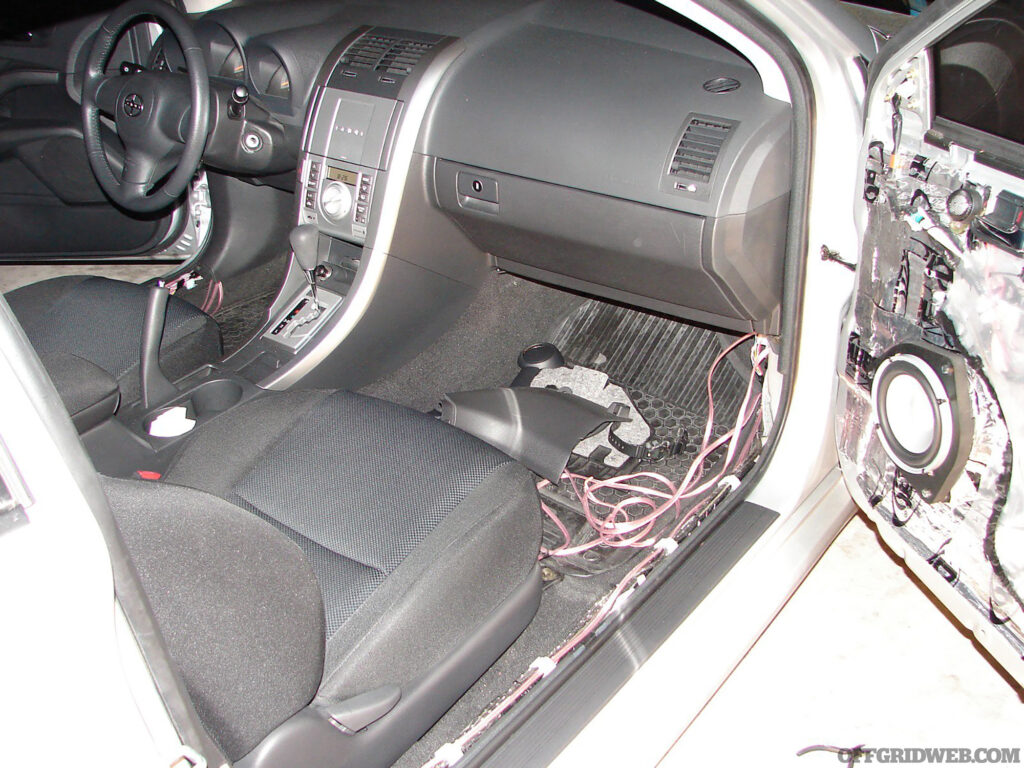
Above: Trying to make wiring modifications can cause serious problems without the proper technical expertise.
Potential for Glare and Disturbance: If not properly aligned or installed, modern lights, especially those with higher brightness, can produce glare that blinds or distracts other drivers. Some regions have regulations regarding the brightness or color temperature of vehicle lights, and upgrading without considering these regulations can lead to legal issues or fines.
Maintenance and Repairs: While modern lights tend to be more durable, when they do need repairs, it might require specialized knowledge or tools, making DIY fixes more challenging. In some advanced lighting systems, a single malfunctioning component might necessitate the replacement of the entire unit, leading to higher repair costs.
Installing Vehicle LEDs
For those who are not accustomed to working on their own vehicles, making modifications can be a daunting proposition. It is easy to imagine worst case scenarios of causing serious damage, or wrecking the vehicle in some way. A good rule-of-thumb to follow with any DIY project where high value items are involved is: if it makes you too uncomfortable, don't do it. When it comes to vehicles in particular, some modification projects are easier than others, and taking it to a professional could save time and money in the long run. So proceed at your own discretion. Companies like Oracle Lighting have a mix of products ranging from easy to install, swappable headlights, to more advanced strip lights that require a little technical knowledge, which makes it easy to pick and plan exactly how you would like to to upgrade your vehicles lighting.
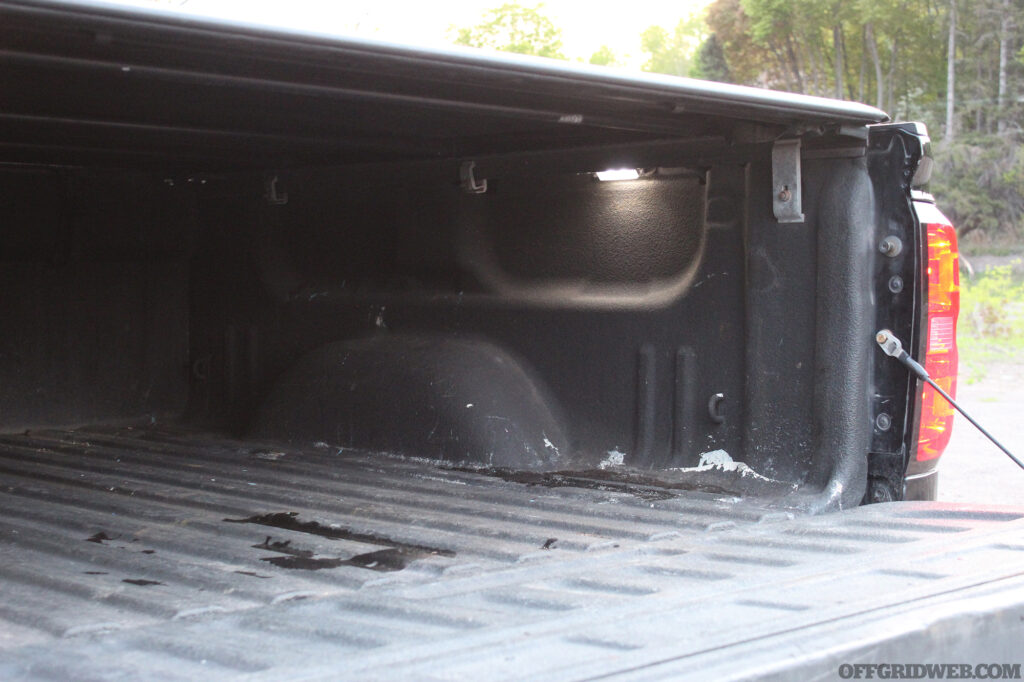
Above: Stock bed lights offer some illumination at night, but it is not ideal.
Fortunately, you do not have to bolt an entire array of bar and strip lights over every square inch of your vehicles body panels to benefit from upgraded lighting. One of the least problematic and easiest upgrades is simply swapping out the headlights. Newer vehicles can make even this project more challenging than it needs to be, but the concept is pretty straight forward, and most headlights simply plug and twist into place. Auto parts stores will be able to tell you the exact LED you need for your vehicles make and model, and in less than an hour, you'll be seeing things in the dark that were previously obscured. Headlights may be all that you need to improve safety and illumination on the road, but there are LED versions of every light from blinkers to license plate lights that could improve the quality of your drive.
Then there are the more advanced lighting projects where personal experience will dictate whether or not you have LEDs professionally installed. This includes specialized lights for camping, overlanding, and trailers, and typically involves tying into the vehicles wiring. Online tutorials for these projects exist in many flavors from highly detailed, to uncomfortably vague, and you should avoid following along with any that don't make you feel confident about completing the installation successfully. Splicing into the wrong wire, or making an improper connection can have cascading detrimental effects to the rest of your vehicle.
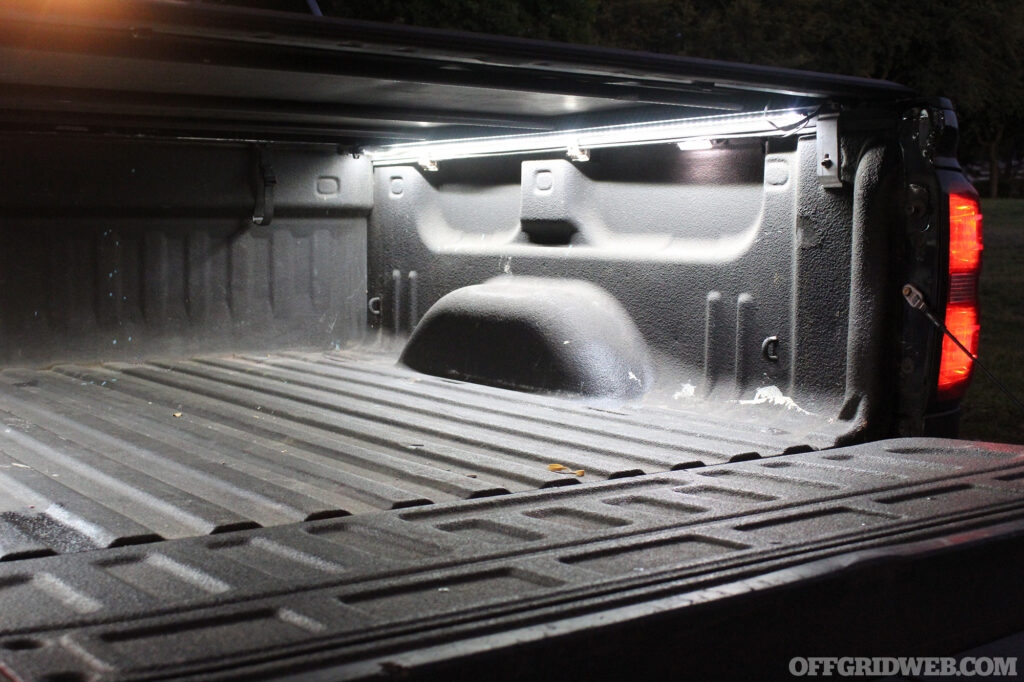
Above: Oracle Lighting LED light strips enhance the effectiveness by illuminating the truck bed in its entirety.
Practical Implications of Advanced Vehicle Illumination
Imagine navigating a serpentine mountain road on a foggy evening. With traditional halogen bulbs, the dense fog scatters the light, severely limiting visibility and making every twist and turn a potential hazard. Now, contrast this with powerful LED lights equipped with adaptive fog lighting technology. These advanced systems pierce through the fog, revealing potential obstacles like fallen branches, wildlife, or sharp bends, ensuring a safer and more confident drive.
Driving on a highway during a torrential downpour can be another daunting situation. The reflection of water on the road, combined with the spray from other vehicles, can significantly reduce visibility. Modern lighting systems, with their enhanced brightness and color temperature, can cut through the rain, reducing glare and improving the driver's ability to judge distances and spot potential hazards.
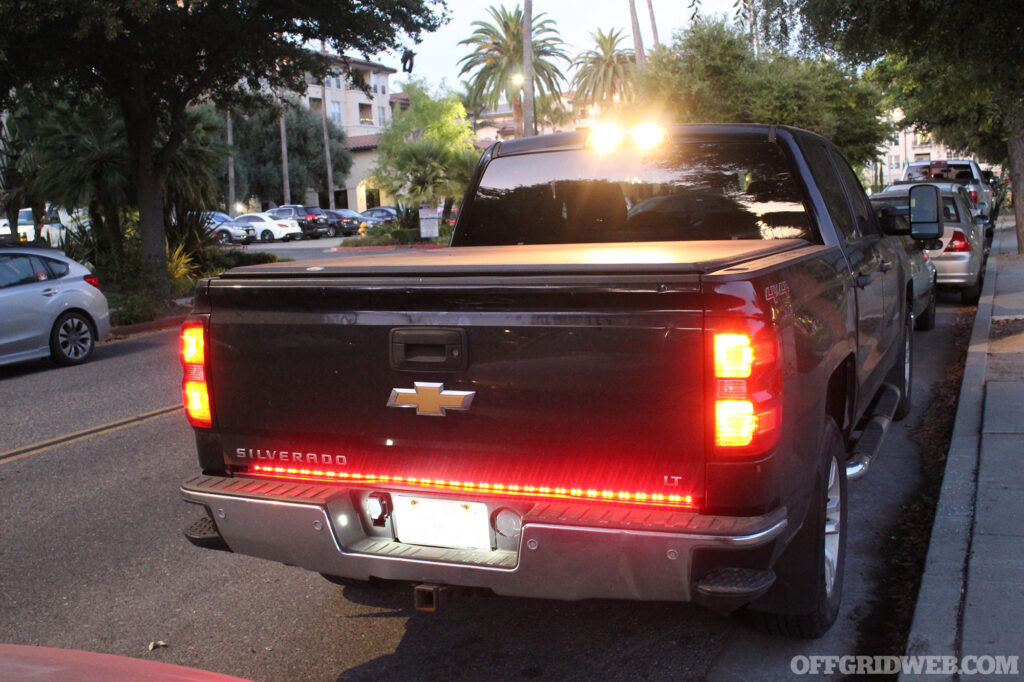
Above: Tail lights communicate to other drivers when you are stopping, turning or going in reverse. Oracle LEDs are brighter than common stock lights, making the vehicle more visible to those who may be following behind.
Venturing on a remote countryside road devoid of streetlights presents more hazards not typically encountered in well-lit cities. In such scenarios, the vehicle's lighting becomes the sole source of illumination. Advanced lighting systems, with their broader and more extended beam patterns, illuminate not just the road but also the peripheries, helping drivers spot animals, pedestrians, or other obstacles that might suddenly come into the path.
In a bustling city intersection, a myriad of activities occurs simultaneously – pedestrians crossing, cyclists weaving through traffic, and vehicles from multiple directions. Here, proper lighting plays a dual role. Bright and responsive brake lights and indicators ensure clear communication of the driver's intentions to others, reducing the risk of collisions. Simultaneously, headlights with adaptive urban lighting can adjust their intensity to prevent blinding other drivers or pedestrians.
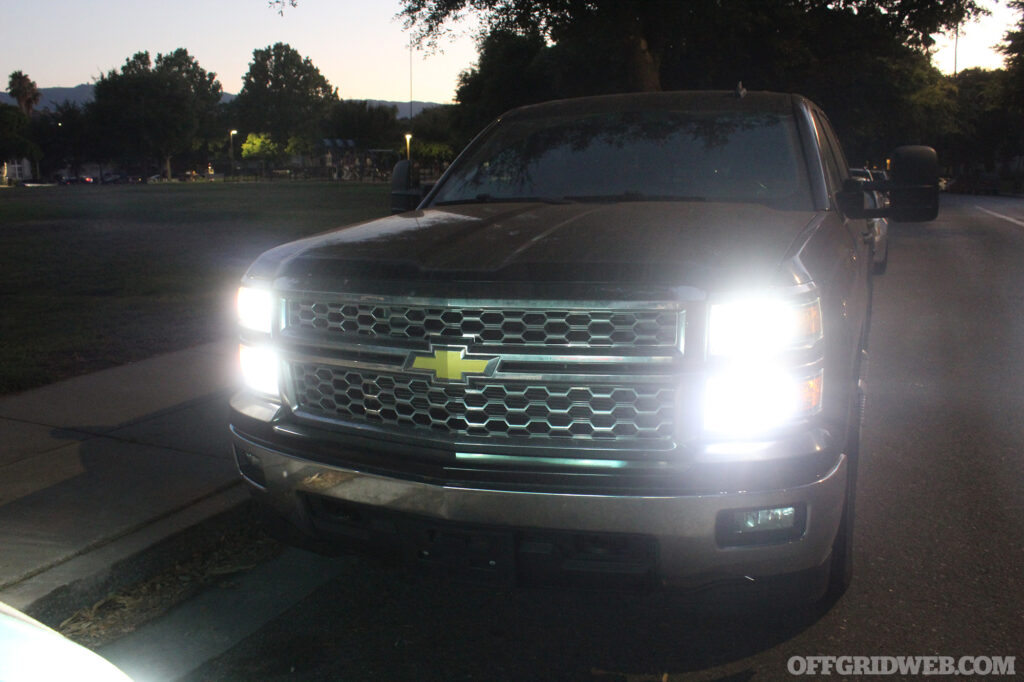
Above: Oracle headlights provide bright white light as opposed to the warm light of halogen bulbs. This makes everything in front of you easier to see for a greater distance.
Parking in tight spaces or multi-story parking lots with poor lighting is a recipe for fender benders. Newer vehicles equipped with perimeter lighting or puddle lamps illuminate the area around the vehicle. This not only aids in parking but also ensures drivers and passengers can safely enter or exit the vehicle, avoiding pot holes or tripping hazards.
Beyond Just Illumination
Vehicle lighting, often taken for granted, is more than just about seeing the road. While advancements in technology will continue to enhance our driving experience, it's crucial to remember the foundational purpose of vehicle lights: safety. Wearing a powerful headlamp will boost your visibility and keep you from getting injured during a power outage, or while out on the trail. So why not take the time to upgrade your visibility while operating thousands of pounds of fast moving steel?
Related Posts
The post Shedding Light on Safety: The Benefits of LED Vehicle Lighting appeared first on RECOIL OFFGRID.
By: Patrick Diedrich
Title: Shedding Light on Safety: The Benefits of LED Vehicle Lighting
Sourced From: www.offgridweb.com/transportation/shedding-light-on-safety-the-benefits-of-led-vehicle-lighting/
Published Date: Mon, 14 Aug 2023 18:17:51 +0000
------------------------
Did you miss our previous article...
https://bushcrafttips.com/bushcraft-news/the-3-minor-terrain-features-to-know
 What is BushcraftSurvival SkillsToolsVideosBushcraft CampsBushcraft KitsBushcraft ProjectsPrivacy PolicyTerms And Conditions
What is BushcraftSurvival SkillsToolsVideosBushcraft CampsBushcraft KitsBushcraft ProjectsPrivacy PolicyTerms And Conditions
